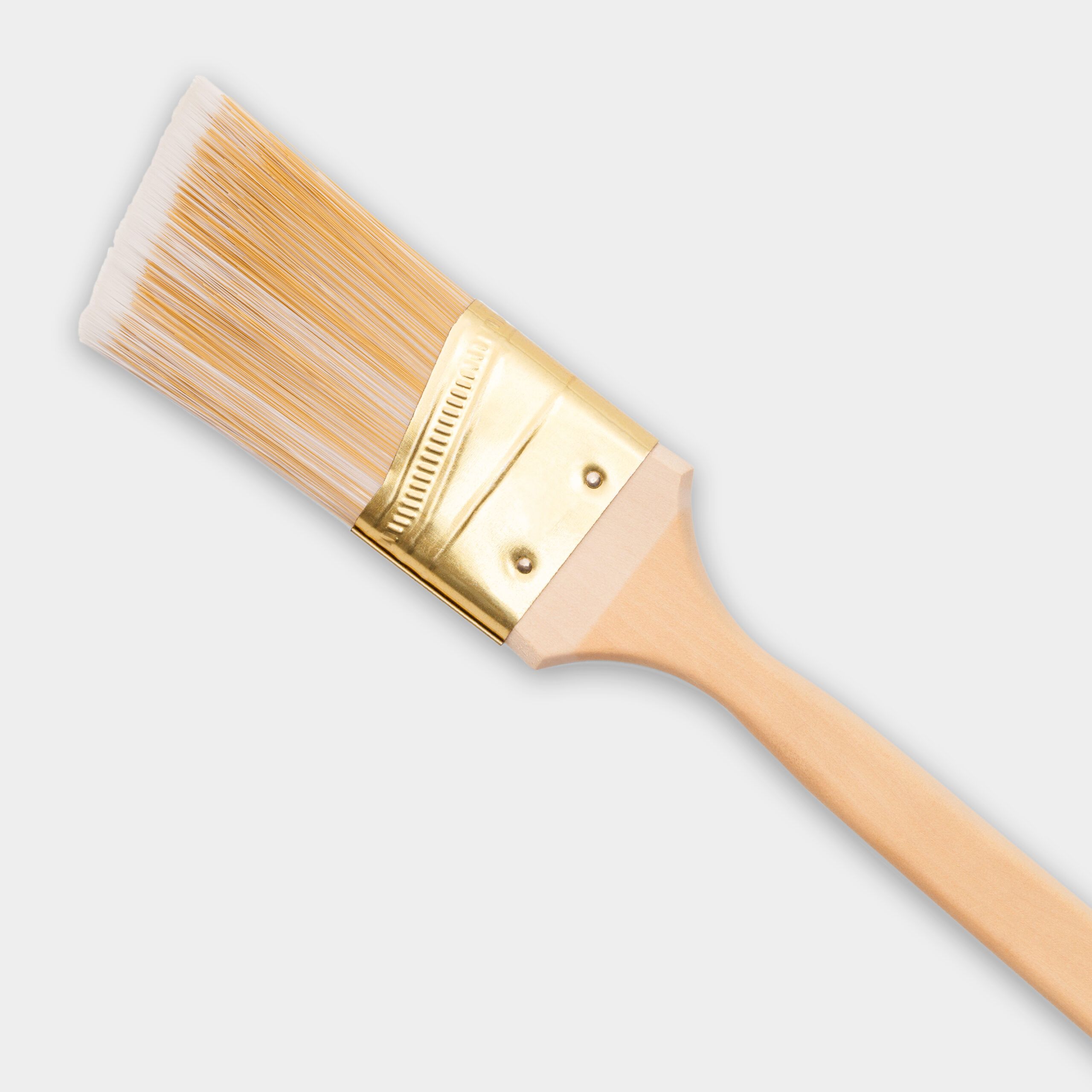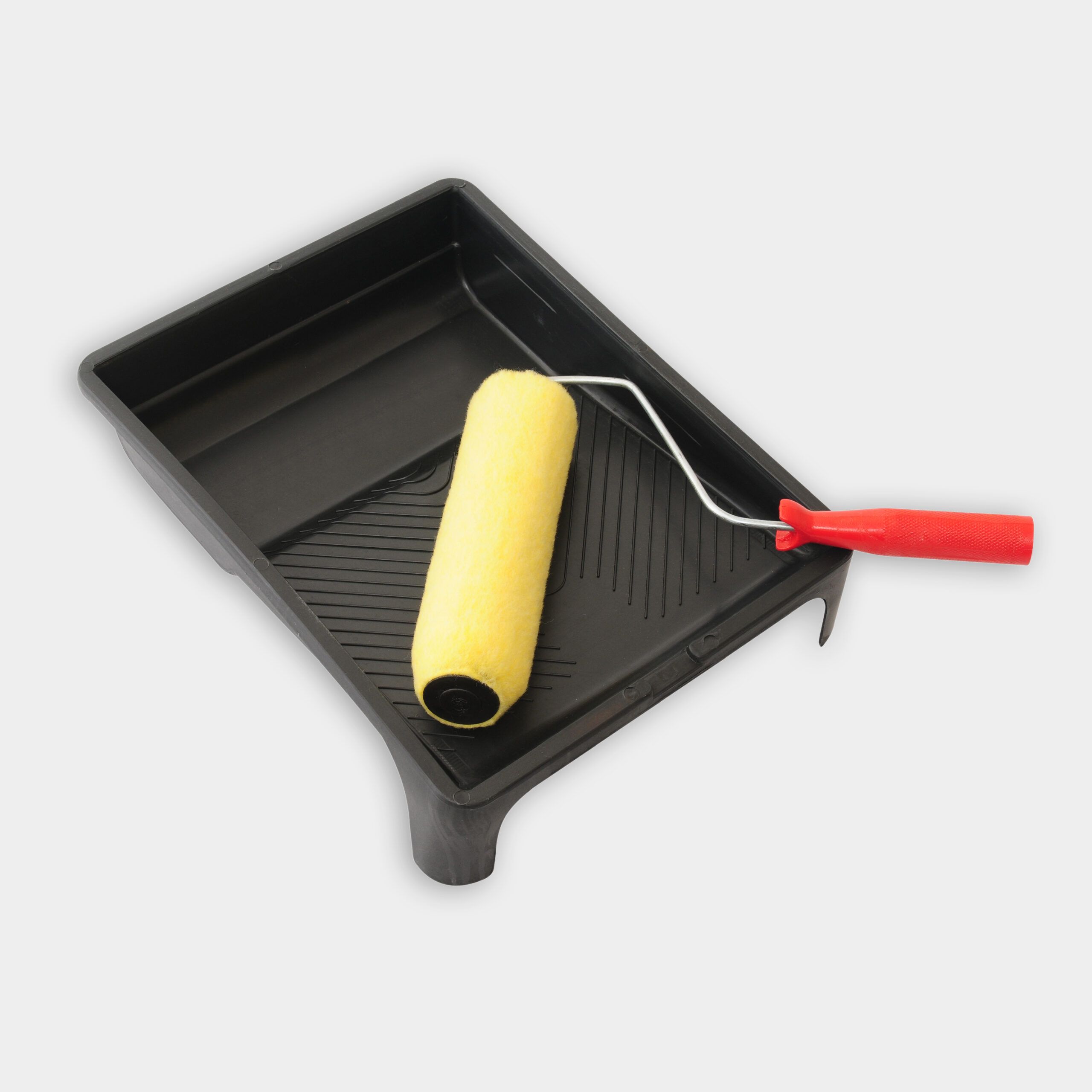We may be compensated if you purchase through links on our website. Our team is committed to delivering honest, objective, and independent reviews on home products and services.
Painting pine wood paneling can dramatically transform the look of a room, bringing new life to outdated walls. This project is an excellent way to modernize your space without the expense and hassle of removing the paneling. In this guide, we’ll walk you through the process of painting pine wood paneling, from preparation to the final coat. Mauro Henrique, Ask This Old House expert painter, demonstrates the technique in the video above.
Preparing the Room for Painting and Paneling
Before you begin painting, prepare the room and the pine paneling. A clean and organized area helps everything go smoothly.
Tools and Materials
Have the following tools and materials ready:
- 3/8 inch paint roller sleeves
- Paint
- Painter’s tape
- Primer
- Rosin paper
Clearing and Protecting the Space
First, clear the space as follows:
- Remove all furniture from the room or move it to the center and cover it with drop cloths.
- Take down any wall hangings, curtains, or blinds.
- Remove switch plates and outlet covers.
- Cover the floor with rosin paper, overlapping the strips to prevent gaps.
- Use painter’s tape to protect areas you don’t want to paint, such as trim, windows, and built-in cabinets.
Cleaning the Paneling
Next, dust the paneling using a microfiber cloth or a vacuum. Then, wipe it down with a damp cloth to remove any remaining dirt or grime. Let it dry completely before moving to the next step.
Assessing and Repairing the Paneling
Make sure your paneling is in good shape before painting. The smoother the surface, the better the paint will look.
Inspecting for Damage
Examine the paneling for cracks, holes, or warped sections. You can fix small imperfections with wood filler, but major damage might require replacing sections of the paneling. Pay attention to the areas around windows and doors, as these are common spots for wear and tear.
If you’re using wood filler to patch any cracks or holes in the paneling, smooth the filled areas with a putty knife. Once the wood filler is dry, sand the repaired spots until they are level with the surrounding paneling.
Priming the Pine Paneling
Priming helps the paint adhere better and can prevent the wood’s natural tannins from bleeding through the paint.
Choosing the Right Primer
Select a high-quality, water-based bonding primer. If you’re using dark paint, use a tinted primer to create a better base coat. In the video, Henrique uses a gray-tinted water-based primer and sealer, which provides an excellent foundation for the dark blue paint they’ve chosen.
Applying the Primer
Apply the primer as follows:
- Stir the primer thoroughly and pour it into a paint tray.
- Use a paintbrush to cut in along edges, corners, and around any trim.
- Work the primer into the grooves between the panels with the brush.
- Use a paint roller with a 3/8-inch nap to apply primer to the flat surfaces of the paneling.
- Allow the primer to dry completely, following the manufacturer’s recommended drying time.
- Assess whether a second coat of primer is necessary, especially if the wood grain is still visible.
Sanding the Paneling for a Smooth Finish
After priming, lightly sanding the paneling helps to create an ultra-smooth painting surface. This step can make a significant difference in the final appearance of your painted paneling.
Light Sanding Techniques
Use fine-grit sandpaper (220-grit or higher) to sand the primed paneling lightly. Concentrate on any rough areas or spots where the primer might have pooled. The goal is to create a smooth surface without removing the primer.
Wipe down the paneling with a damp cloth to remove sanding dust. Let the paneling dry completely before proceeding to the painting step.
Painting the Pine Paneling
Once the primer is dry, you’re ready to apply the paint. The type of paint finish you choose can change the final look, so pick something that fits your style.
Selecting the Paint
Acrylic paint works well on pine paneling. If you want a finish that hides flaws, go with matte. For a bit more durability, satin or semi-gloss finishes work well in high-traffic areas.
In the video, Henrique opts for a matte finish, which reflects less light than other finishes and can help hide imperfections in the paneling.
Applying the Paint
Here’s how to apply the paint like a pro:
- Stir the paint thoroughly before pouring it into a clean paint tray.
- Use an angled brush to cut in around edges, corners, and trim.
- Work the paint into the grooves between panels with the brush.
- Use a roller with a 3/8-inch nap to apply paint to the flat surfaces of the paneling.
- Allow the first coat to dry completely according to the manufacturer’s instructions.
- Apply a second coat using the same technique for full coverage and a uniform finish.
Sealing and Protecting the Panel Finish
To help your paint job last, especially in busy areas, applying a sealer can add extra durability.
Choosing a Protective Sealer
A clear, water-based polyurethane sealer works well for most interior paneling. Select a finish that matches your desired sheen level, whether it’s matte, satin, or gloss.
Applying the Sealer
Apply the sealer as follows:
- Stir the sealer thoroughly and pour it into a clean paint tray.
- Use a high-quality brush or a foam applicator to apply a thin, even coat of sealer.
- Allow the sealer to dry according to the manufacturer’s instructions before applying a second coat.
- Apply additional coats as necessary for added protection, allowing each coat to dry completely.
Tips for a Professional-Looking Pine Wood Panel Finish
To achieve the best results when painting pine wood paneling, keep these tips in mind:
- Work in small sections and maintain a wet edge to avoid lap marks.
- Paint in the direction of the wood grain for a smoother finish.
- Use long, smooth strokes with the roller to minimize texture differences.
- Check your work frequently in different lighting conditions to achieve even coverage.
- Allow adequate drying time between coats and before rehanging any decor.
Common Challenges and Solutions for Pine Wood Paneling
Painting pine wood paneling can present some unique challenges. Here are some common issues and how to address them:
Knot Bleed-Through
Pine knots can bleed through the paint over time. To prevent this:
- Apply a shellac-based primer specifically to the knots before the general priming step.
- Use two coats of primer over the entire surface for extra protection.
- Use a stain-blocking primer for particularly problematic areas.
Uneven Texture
If the paneling feels rough, a high-build primer and some sanding can smooth it out:
- Sand the paneling lightly before priming to smooth out any rough spots.
- Use a high-build primer to help fill in minor imperfections.
- Use a paint with a flatter finish, which can help hide texture irregularities.
Paint Adhesion Issues
Sometimes paint may not stick well to older, finished pine paneling. To improve adhesion, try this:
- Clean the paneling thoroughly with a degreasing cleaner before painting.
- Lightly sand the surface to create a better surface for the primer to grip.
- Use a high-quality bonding primer designed for glossy surfaces.



